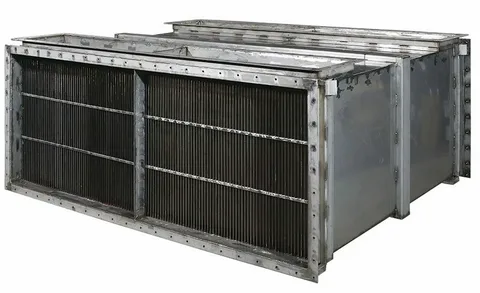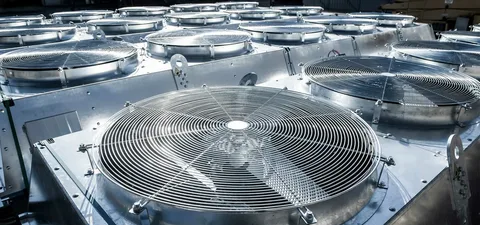Winter is here, and that means staying warm can be expensive. But what if you could stay warm without breaking the bank? A heat exchanger air to air is the answer! They’re an energy-efficient and cost-effective way to regulate the temperature in your home and office, allowing you to stay comfortable without spending too much. In this blog post, we’ll explore why air-to-air heat exchangers are a great choice for keeping warm while keeping costs down.
The Benefits of Air-to-Air Heat Exchangers
Air-to-air heat exchangers offer a range of benefits that make them an excellent choice for keeping warm while keeping costs down. First and foremost, these heat exchangers are highly energy-efficient. They transfer heat from the warm air leaving your home to the cool air entering it, effectively using the outgoing air to heat the incoming air. It means that less energy is required to heat your space, resulting in significant energy savings.
Additionally, air-to-air heat exchangers help to improve indoor air quality. They feature filters that trap dust, pollen, and other airborne particles, ensuring that the air circulating in your home is clean and healthy. It is particularly beneficial for individuals with allergies or respiratory issues.
Another advantage of air-to-air heat exchangers is their ability to reduce humidity levels. By exchanging heat and moisture between the incoming and outgoing air streams, these devices can help to maintain a comfortable and balanced indoor humidity level. It is especially important in humid climates where excess moisture can lead to mould growth and other issues.
Lastly, air-to-air heat exchangers are cost-effective. Their initial installation costs may be higher than other heating systems, but the energy savings over time can offset this expense. Their long lifespan and low maintenance requirements also contribute to their overall cost-effectiveness.
How Does an Air-to-Air Heat Exchanger Work?
Air-to-air heat exchangers may sound complex, but they work on a simple principle to keep your home warm while minimizing energy consumption. These devices transfer heat from the warm air leaving your home to the cool air entering it, resulting in a balanced and comfortable indoor temperature.
Here it works: the air-to-air heat exchanger consists of two airstreams, one carrying warm air from inside your home and the other bringing fresh, cool air from outside. These two airstreams pass through the heat exchanger core, a series of metal plates or tubes.
As the warm air from inside your home flows through the heat exchanger core, it heats the metal plates or tubes. At the same time, the cool air from outside passes through the other side of the heat exchanger, where it absorbs the heat from the plates or tubes. The heated air from inside is expelled outside, while the warmed and filtered air from outside is introduced into your home.
By exchanging heat between the outgoing and incoming air, air-to-air heat exchangers significantly reduce the energy needed to heat your home. It saves you money on heating costs and reduces your carbon footprint.
Increased Energy Efficiency and Savings with Whole House Air Exchanger
Air-to-air heat exchangers are known for their energy efficiency, but did you know that opting for a whole house air exchanger can further increase your energy savings? That’s right! You can enjoy even greater efficiency and savings by choosing a system that covers your entire home.
One of the main advantages of a whole-house air exchanger is that it ensures a balanced temperature throughout your home. Traditional heating systems often result in hot and cold spots, leaving some areas uncomfortable while others are overheated. With a whole-house air exchanger, the warm air from one room is effectively distributed to all the other rooms, providing a consistent and cozy temperature throughout your home.
Additionally, a whole-house air exchanger allows for better control over your energy usage. Instead of having multiple individual systems, a centralized unit can be programmed to operate based on your specific heating needs. It means you can easily adjust the settings to match your schedule, heating only the rooms that are in use and minimizing energy waste in unoccupied areas.
Not only will a whole-house air exchanger help you save on energy costs, but it can also reduce wear and tear on your heating system. By evenly distributing the workload, your system will have a longer lifespan and require less maintenance.
A whole-house air exchanger is an excellent investment regarding energy efficiency and savings. It provides a comfortable and consistent temperature throughout your home and helps you reduce your carbon footprint and save on energy costs. So, why settle for less when you can have the whole package? Opt for a whole-house air exchanger and enjoy increased energy efficiency and savings.
Types Of Small HRV Units Available on the market
Air-to-air heat exchangers come in various sizes and configurations to suit different needs and spaces. When it comes to small HRV units, there are a few options available on the market.
One popular type of HRV unit is the compact heat exchanger. These units are designed to be space-saving, making them ideal for apartments or smaller homes. They are typically installed in a centralized location, such as a utility room or attic, and can provide balanced ventilation for the entire living space.
Another option is the wall-mounted heat exchanger. These units are installed directly on the wall, occupying minimal space and providing localized ventilation. They are commonly used in rooms where a high level of ventilation is desired, such as kitchens or bathrooms.
For those looking for a portable solution, portable heat exchangers are also available. These units can be easily moved from room to room and provide ventilation where it is needed most. They are often used in small offices or workshops.
When choosing a HRV unit, it is important to consider factors such as the size of the space, the desired level of ventilation, and the specific needs of the occupants. Consulting with a heating and cooling professional can help determine the best option for your home or office.
No matter which type of HRV unit you choose, the benefits of air-to-air heat exchangers remain the same – energy efficiency, improved indoor air quality, and cost-effectiveness. So, why not explore the options and find the perfect heat exchanger to keep you warm while keeping costs down?
Choosing the Right Air-to-Air Heat Exchanger for Your Home
Choosing the right air-to-air heat exchanger for your home is crucial to ensure optimal performance and efficiency. With various options available on the market, it can be overwhelming to make the right choice. But fear not; we’re here to guide you through the selection process!
The first step in choosing the right air-to-air heat exchanger is to assess your home’s size and layout. Consider factors such as the number of rooms, square footage, and the level of ventilation required. It will help determine the capacity and airflow requirements of the heat exchanger.
Next, consider the installation options available to you. Do you have a centralized utility room or attic where a compact heat exchanger can be installed? Or do you prefer a wall-mounted unit for localized ventilation in specific areas like the kitchen or bathroom? Portable heat exchangers are also great for small offices or workshops where mobility is important.
It’s also important to consider the noise level of the heat exchanger. Look for units with low decibel ratings to ensure quiet operation, especially if you plan to install it in a living space.
Lastly, consult a heating and cooling professional for expert advice tailored to your specific needs. They can help you choose the right size and type of air-to-air heat exchanger for your home, considering your climate, energy efficiency goals, and budget.
By carefully considering these factors and seeking professional guidance, you can confidently choose the right air-to-air heat exchanger for your home, ensuring maximum comfort and energy efficiency. Stay warm without breaking the bank!
Maintenance and Care of Your Heat Recuperator
Once you’ve invested in an air-to-air heat exchanger to keep your home warm and cozy, it’s important to properly maintain and care for it to ensure its optimal performance and longevity. Here are some maintenance tips to keep your heat recuperator in top shape.
First and foremost, regular cleaning of the air filters is essential. The filters in your heat exchanger trap dust, pollen, and other airborne particles, so they can quickly become clogged and hinder the airflow. Cleaning or replacing the filters every few months will help maintain good air quality and prevent strain on the system.
Additionally, it’s important to regularly inspect and clean the heat exchanger’s coils or plates. Over time, dust and dirt can accumulate on these components, reducing their efficiency. A simple wipe with a damp cloth or gentle vacuuming can remove debris and ensure optimal heat transfer.
Don’t forget to check the outdoor unit for any debris, such as leaves or twigs, which can obstruct airflow. Clearing any obstructions will help the system operate smoothly and efficiently.
Finally, scheduling regular professional maintenance is highly recommended. A qualified technician can thoroughly inspect any hard-to-reach components, and address any potential issues before they become major problems.
By following these maintenance tips and taking good care of your recuperator, you can enjoy the benefits of energy-efficient and cost-effective heating for many winters. Stay warm, save money, and care for your air-to-air heat exchanger!
FAQs
Have some questions about air-to-air heat exchangers? We’ve got you covered! Check out these frequently asked questions to learn more:
Q: How much energy can I save with an air-to-air heat exchanger?
A: Air-to-air heat exchangers are highly energy-efficient, and the exact savings will vary depending on your climate, insulation, and heating needs. However, studies have shown that these systems can save up to 50% on heating costs compared to traditional heating methods.
Q: Are air-to-air heat exchangers noisy?
A: No, they’re not! Air-to-air heat exchangers are designed to operate quietly, so you won’t be disturbed by loud noise. You can enjoy warmth and comfort without any unwanted sounds.
Q: How often should I clean the filters?
A: It’s recommended to clean or replace the filters every few months, depending on the level of dust and dirt in your home. It will ensure good air quality and prevent strain on the system.
Q: Can air-to-air heat exchangers be used for cooling in the summer?
A: No, air-to-air heat exchangers are designed specifically for heating. However, other types of heat exchangers, such as air-to-water systems, can provide both heating and cooling capabilities.
Conclusion
In conclusion, air-to-air heat exchangers are a fantastic solution for staying warm without breaking the bank. They offer a range of benefits that make them an excellent choice for keeping your home or office comfortable while minimizing energy consumption. These heat exchangers are highly energy-efficient, allowing you to save money on heating costs and reduce your carbon footprint. They also improve indoor air quality by filtering out dust, pollen, and other airborne particles, making them ideal for individuals with allergies or respiratory issues. Additionally, air-to-air heat exchangers help to maintain a balanced indoor humidity level, preventing mould growth and other problems associated with excess moisture.



